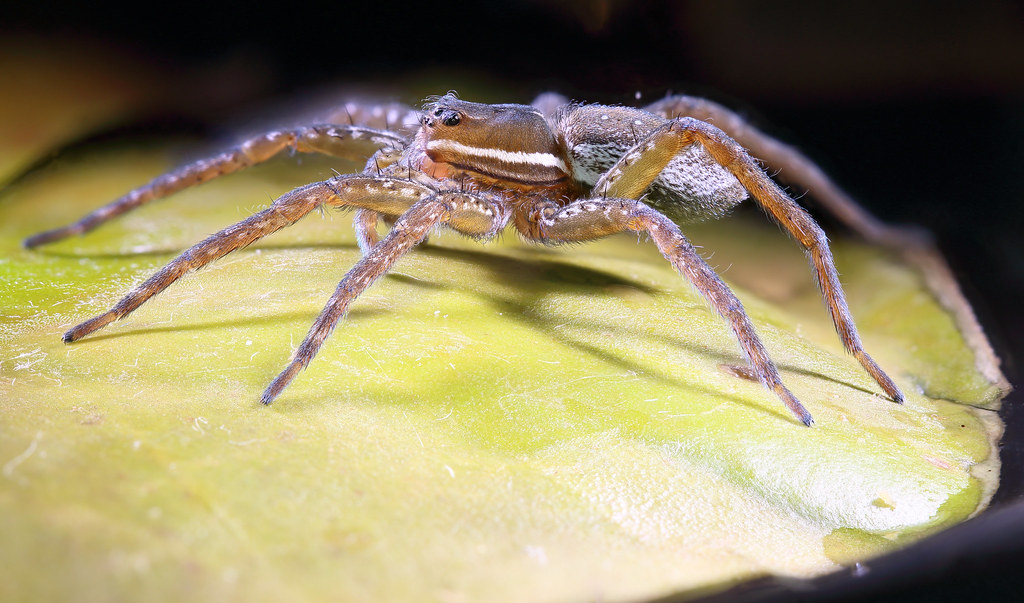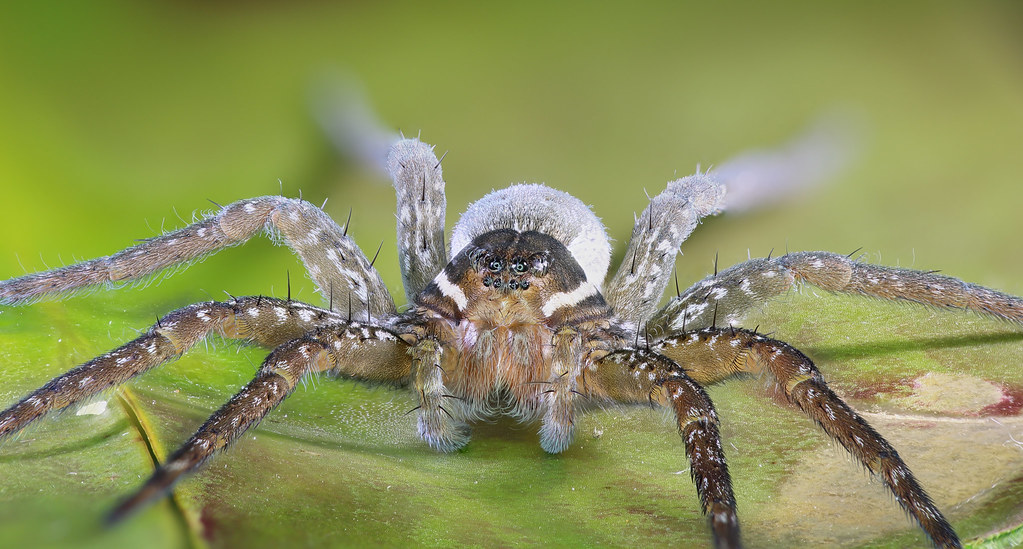This fishing spider was captured out on a local river while I was out with my kayak. She was not full grown, but was still large enough to encourage careful handling. I had set her out on a stage which consisted of a black plastic plate, some water (this had to be very shallow or else she would dive under it), and some lily pads. I show and explain the photography rig farther down since some features may be of interest to folks here. I would also of course welcome advice on how to better set up the equipment.
Anyway, here she is!
 Six-spotted fishing spider by Mark Sturtevant, on Flickr
Six-spotted fishing spider by Mark Sturtevant, on Flickr Six-spotted fishing spider by Mark Sturtevant, on Flickr
Six-spotted fishing spider by Mark Sturtevant, on Flickr Six-spotted fishing spider by Mark Sturtevant, on Flickr
Six-spotted fishing spider by Mark Sturtevant, on Flickr Six-spotted fishing spider by Mark Sturtevant, on Flickr
Six-spotted fishing spider by Mark Sturtevant, on Flickr Six-spotted fishing spider by Mark Sturtevant, on Flickr
Six-spotted fishing spider by Mark Sturtevant, on FlickrI love these spiders! Very fast when they decide to run off, but fortunately, they just as quickly stop after going for only a short distance. I also appreciate that they don't like to jump. Even so, more than half of the stacking efforts were terminated by her suddenly deciding to clean every... one... of..... her.......8.........feet. Or by her running off. The last stack of pictures had to be cut short because of her shenanigans.
Finally, here is the rather simple rig that I had used. The Camera (5d mark iii) was mounted onto a tripod with a 'boom' arm, and the focus stacking was done with a Helicon Fb tube. The lens was the Canon 100mm f/2.8L. The light on the lens was a fluorescent ring light that was requisitioned from a dissecting microscope.

To the left are some supplemental LED headlights attached to 'arms' from an old Joby gorillapod tripod. I had detached one leg of this tripod and used it to extend the length of the other two legs, and to these the lights were attached. This was meant to be attached to the camera with a cold shoe mount, but the mount that I was using does not work well, unfortunately. A pity, since I would like to use these lights in the field.
Photographs were taken in "burst" mode in order to get through a stack as fast as possible. Generally, between 50-80 pictures were taken for each final picture. The pictures were combined in Zerene Stacker and touched up in Gimp.
